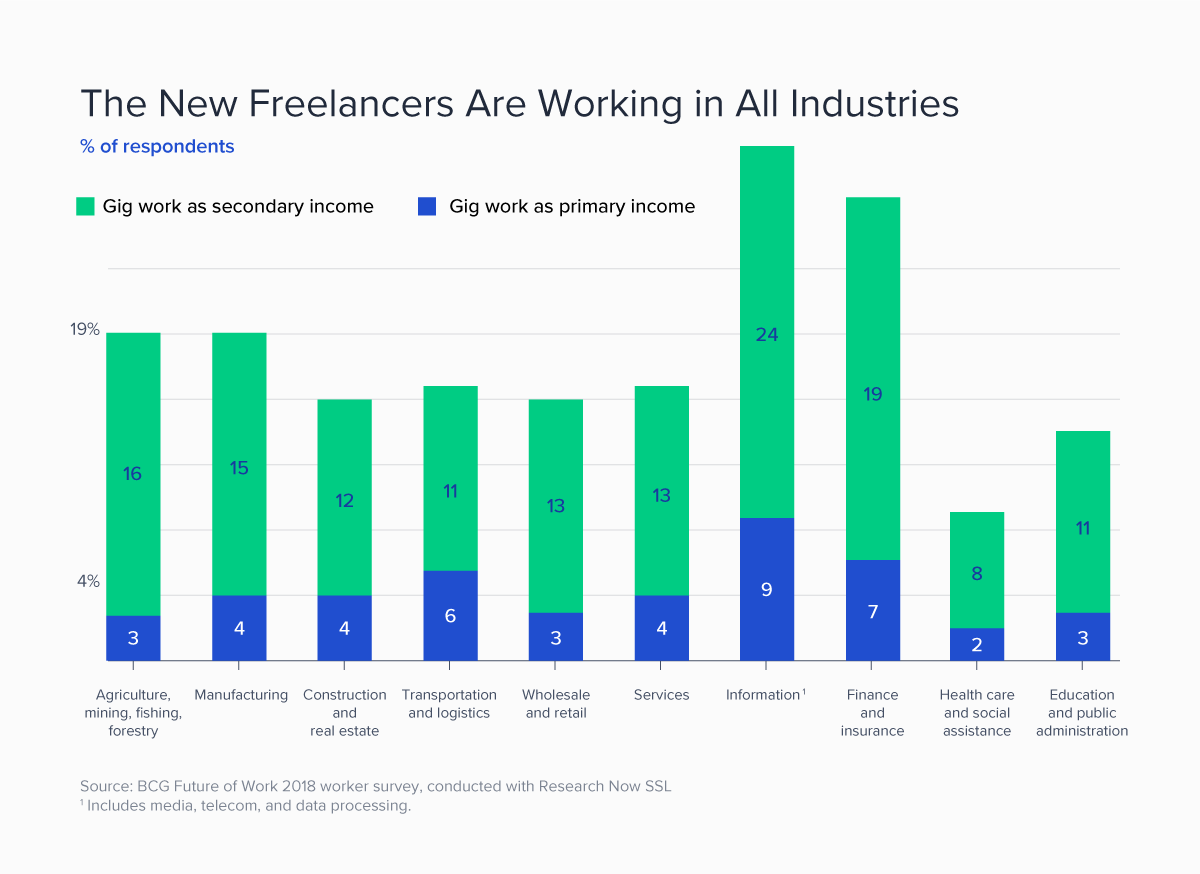Seemingly Impossible: How Freelancers Are Fueling One Marketing Department
authors are vetted experts in their fields and write on topics in which they are extremely knowledgeable. All of our content is peer reviewed and validated by world-class professionals.

The last thing I did before I left for maternity leave was to write the press release announcing the small company I worked for had been acquired by CompuVision, a managed IT services and consulting company in Edmonton, Canada. The first thing I faced when I returned one year later as director of strategic marketing was to build an internal marketing department without any resources or budget.
Let me go back two years. CompuVision had never had an internal marketing team. They kept my position in the merger, but I didn’t have any budget to hire full-time employees or work with an agency. I was expected to do the work of a full marketing department, myself.
I went to discuss this with Ryan Vestby, CompuVision’s CEO. Luckily for me, Vestby is a disruptor. He pushes everyone to try new things and to think differently. He said, “Cara, I want you to build me the marketing function that I know you're capable of, but I have no budget and no resources for you. You're going to have to prove that this company needs internal marketing.”
I relished the challenge. Vestby introduced me to a few of the digital platforms, and I began to find highly skilled freelancers. When I opened the door to this talent economy, at first, it was not an easy boulder to push up the hill. There were some projects that didn’t go as well as planned. I had to learn not only who I could count on, but how to manage freelancers and how to think about projects differently.
Today, we’re a well-oiled machine. My one-person marketing department produces as a fully functioning team. Working in concert, we have pulled off seemingly impossible projects like producing a magazine from scratch in five days and regularly meeting deadlines that take one to three days, not weeks. It’s so successful that this model has been adopted company-wide.
Work Smarter, Not Harder
My team of freelancers was born of necessity, but it’s not a unique approach. In 2018, about 40% of 6,500 global executives predicted that freelance workers would account for a growing share of their organization’s workforce in the next five years, according to a global survey by BCG.
CompuVision had used agencies and freelancers for its marketing before -- including while I was out on leave -- and Vestby was a believer. But they hadn’t done anything on the scale that I envisioned: producing the amount of work a full inhouse team could do, without the inhouse part. Currently, I manage 112 projects, relying on a team of 12 core freelancers with an additional 35 I can tap into as needed, either to cover more work or when I require specialized skills.

In our first year, my team’s output was four times what an agency had done in the prior year with a 70% cost savings. In the second year, my team had six times the output. I honestly cannot imagine going back to managing FTEs.
It’s not just about the cost savings. Other advantages include:
- Ability to quickly scale up or down depending on the number and complexity of projects
- Allowing team leaders to focus on their strengths and delegate projects that need specific expertise
- Finding experts from a global pool, which makes it easier to find people with experience in anything, from graphic design to animation to copywriting
- Increased productivity by significantly reducing wait times compared to working with an agency
In fact, cutting wait times to “get stuff done” was the biggest factor for the company. We wanted to have a high-producing, high-performing marketing department that could work with sales and adapt to the needs of a company that moves quickly.
It’s a tall order for any team, and because I rarely meet my freelancers in person, I have to be careful about the vetting process. When hiring freelancers, I look for the following:
- Ability to plan strategically. Are they breaking things into tangible goals so I can look at their results? Can they ask for my feedback at specific times to keep the project moving?
- Offering support. I need people who are adaptable when things change. Technology moves fast, and there’s going to be modifications; therefore, I need people who won’t shy away from challenging conversations.
- Anticipating what will be needed. I need them to be three steps ahead of me because they are the experts. I’m looking to them for guidance and support.
Creating a Magazine in Five Days
Consider this case in point: Disruption Magazine Canada. Launched by CompuVision in 2018, the quarterly magazine was launched five days after I got the idea, in order to meet a trade show deadline. To make it work, I hired experts in writing, editing, design, layout, and photography from across the world and took full advantage of the time zones. As one person was going to sleep, he or she could hand off their work to someone who was just starting their day.
We had hourly deadlines, not daily, and I was always available. While I would never do that again (I’ve learned I have to sleep), I was only able to do it because of this global team of top-notch freelancers. There was no grace period, either. If a freelancer missed a deadline, I canceled their contract and asked someone else to pick it up.
It’s a little less intense now, and the magazine boasts 37,000 subscribers and 11,000 followers on Twitter in its second year. After a global search for an editor-in-chief, I found the perfect freelance editor, who turned out to be local (though I was introduced to her by an acquaintance in Israel). Building CompuVision’s marketing team from freelancers has allowed me to pick the best talent from around the world. We are literally collaborating on a global scale. I’m based in Edmonton, Canada, a town not known for its Fortune 500 presence, and the people on my team have worked for some of the biggest companies in the world. My pool of talent -- and my expectations -- have completely changed.
How to Build a Freelance Talent Model
Thanks to the success of my team, freelancers are a growing part of CompuVision’s culture, but it’s a work in progress. Colleagues interested in my model question how their own roles in the company would change if they started assigning out some of their tasks. My response is always that freelancers allow you to focus on what you do well – and the work you enjoy – while still accomplishing everything that needs to be done. If you project manage, you will accomplish more and get credit for what you and your team produce.
Colleagues also had to learn how much to expect from freelancers. In my opinion, you can expect a lot. For example, for especially tight deadlines, I request responses within 30 minutes, and my team delivers.
Failure was a big worry, too, for other managers at CompuVision. What if they turned a project over to a freelancer and it came back all wrong? To help allay that fear, each department fills out a form to request freelance talent. An internal project manager takes the requests, hires from a vetted list, and creates the budget. The top leadership of the company encourages the process. Our CEO and president honestly believe that we are better workers by opening our doors to this global knowledge base.
To successfully launch a freelance program, I advise the following:
- Start small. Pick a project that’s limited in scope, budget, and visibility and try it with freelancers.
- Be prepared to manage the project and provide measurable milestones. It was a new way of thinking and working for me when I mapped out projects. Rather than “create pull-up banner,” for example, I broke the project into tasks -- writing, designing, printing – with milestones for each. Then, I engaged the talent I needed for each one. Providing milestones helps me track progress and ensure deadlines are met.
- Invest time and communicate -- a lot -- up front. Yes, it does take a little while to get freelancers up to speed on a brand. But if the goal is a long-term relationship, the process becomes more efficient. My team can now anticipate what I need.
- Set expectations and discuss support. How will the project remain on track if something unexpected happens, like a freelancer getting sick or taking time to care for family members? Many veteran freelancers already have a backup person who can step in. At the very least, get details on where the work in progress is located and how to access the files. Be very clear about deadlines, deliverables, and revisions.
The freelancers I work with truly are my team. They’re with me at meetings and during presentations. They are as committed as I am. I work to create a culture that includes them, acknowledging holidays and life events, for example. I believe freelancers are the workforce of the future. They are the way to combine the global workforce in a way we never thought possible before.
